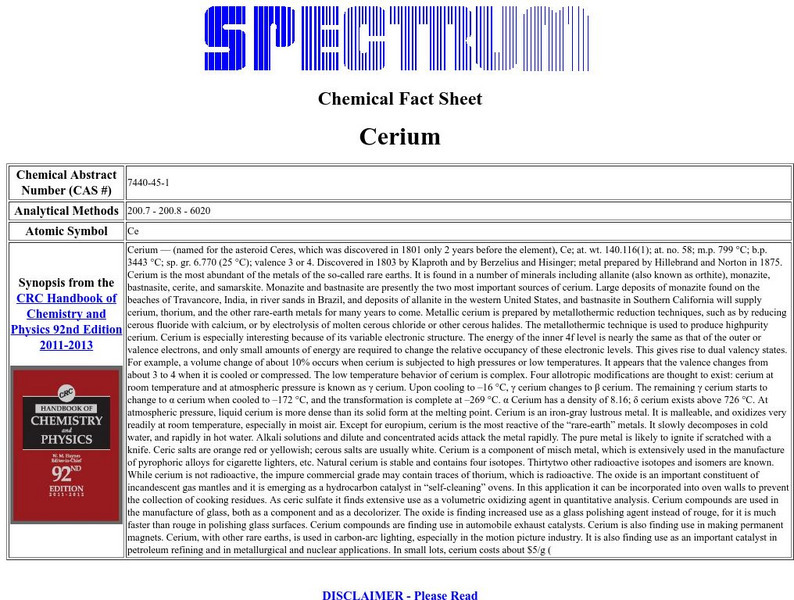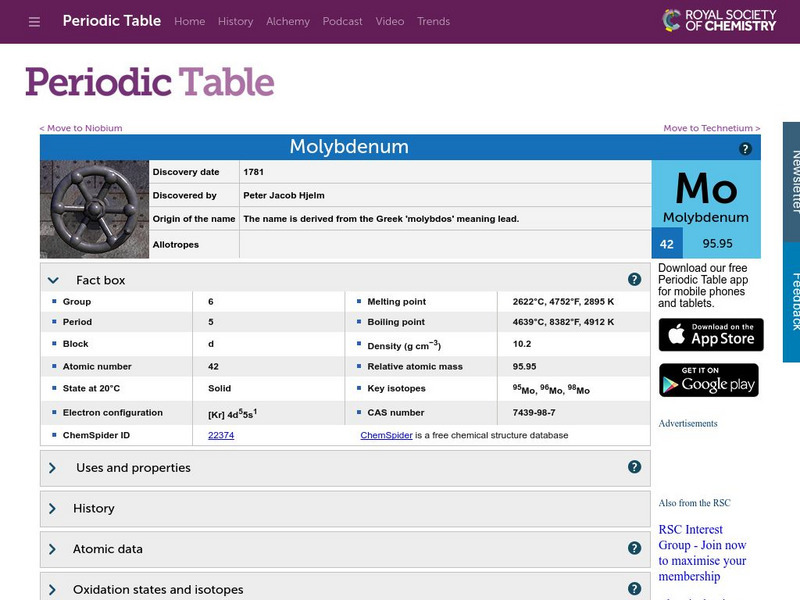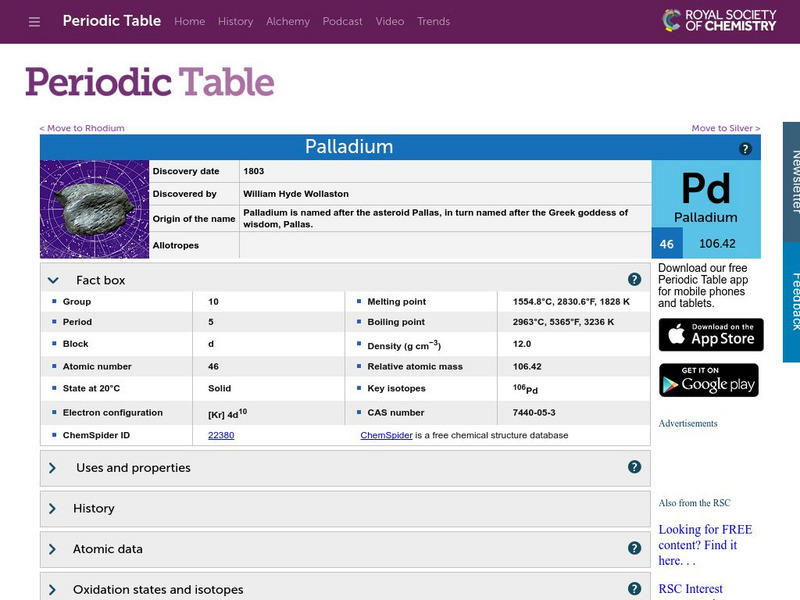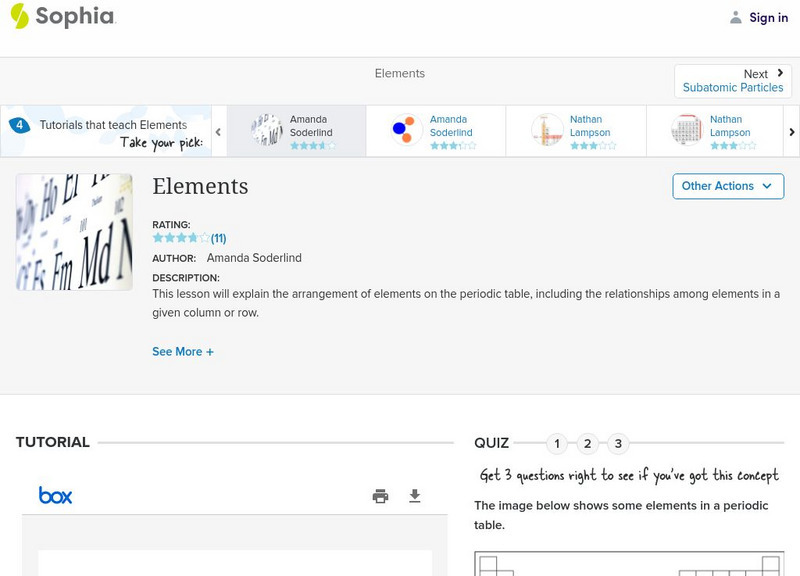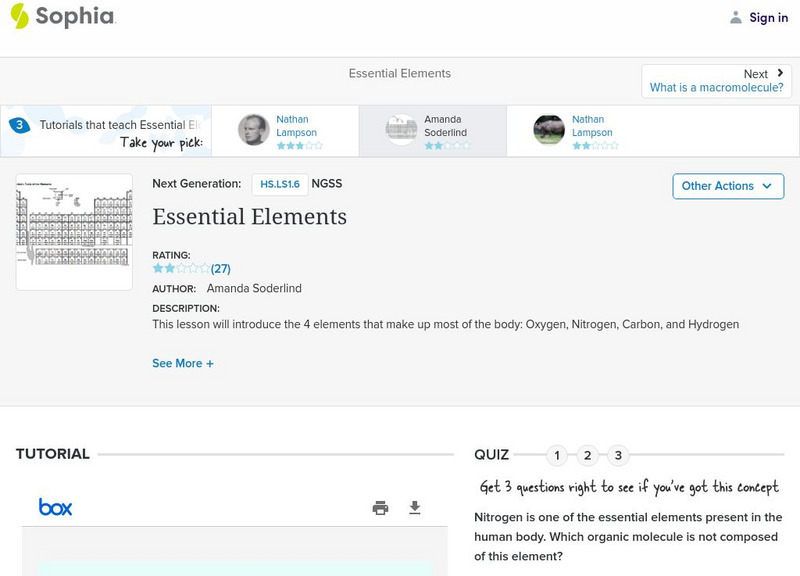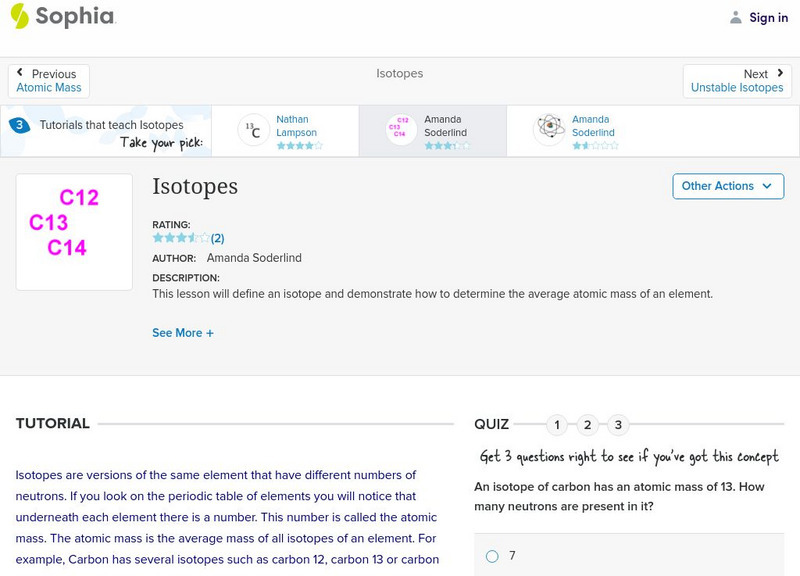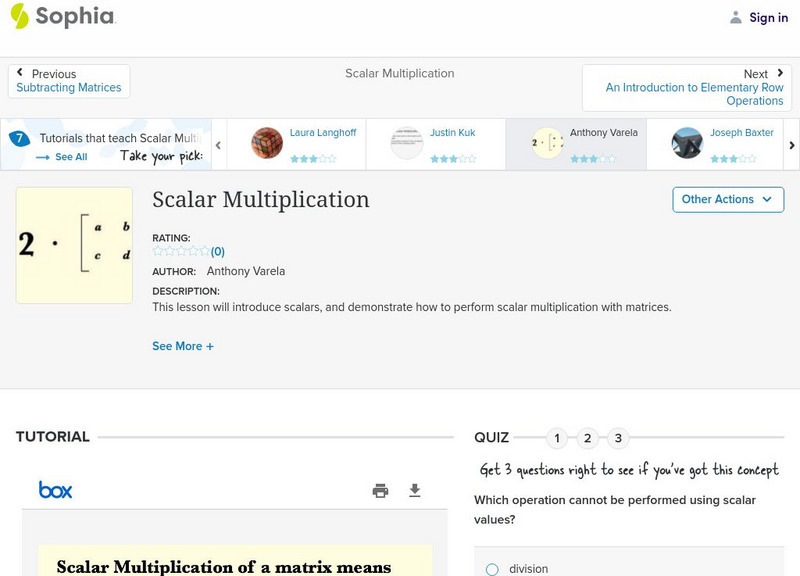Concord Consortium
Concord Consortium: Atom and Ion Builder
Explore how changing the numbers of protons, neutrons, and electrons affect the type of atom.
University of Kentucky
Chem Comics: Californium
A comic page from 1964 that features californium as one of several elements for which no practical uses were then known.
University of Kentucky
The Comic Book Periodic Table of Elements: Silver
This site may focus on fun, rather than facts, but it will become a favorite of any Chemistry student. Here you will find scanned images of panels and/or pages of comic books, with references to the element you seek.
University of Kentucky
Chem Comics: Dysprosium
A 1997 comic strip featuring dysporsium. Given the small amount of interesting information there is on this element, this is a nice touch for a report or a presentation.
University of Kentucky
Uk: Rhodium Comics
Comic featuring rhodium Possible visual for a presentations
University of Guelph
The Carbon Family: Electron Binding Energies
A very advanced site on the elements of the Carbon Family. This site describes the electron binding energies of each in a detailed graph.
University of Guelph
The Carbon Family: Shielding Constants
A short page dedicated to the Shielding Constants of the elements in the Carbon Family.
Royal Society of Chemistry
Chemical Society: Chromium
A short summary of some of the more basic information one might need to know about this element.
Florida-Spectrum Environmental Services
Florida Spectrum: Chemical Fact Sheet: Cerium
A summary of the uses and characteristics for the chemical element Cerium.
Royal Society of Chemistry
Chemical Society: Molybdenum
This resource from Chemical Society provides a short paragraph with information on molybdenum and its uses. Less detail than other sites, but easy to follow.
Royal Society of Chemistry
Chemsoc: Aluminum
A short summary of some valuable information on aluminum.
Royal Society of Chemistry
Chemical Society: Palladium
A concise description is provided for palladium (Pd), provides origon as well as a short description of it's uses.
Museum of Science
The Atom's Family: Phases of Matter
Help the Phantom choose a material and observe the changes at different temperatures in the molecule chamber. What happens to the elements or molecules as the temperature changes?
Sophia Learning
Sophia: Elements: Lesson 4
This lesson will explain the arrangement of elements on the periodic table, including the relationships among elements in a given column or row. It is 4 of 4 in the series titled "Elements."
Sophia Learning
Sophia: Elements: Lesson 1
This lesson will explain the arrangement of elements on the periodic table, including the relationships among elements in a given column or row. It is 1 of 4 in the series titled "Elements."
Sophia Learning
Sophia: Elements and Compounds
This lesson will discuss properties of elements and comopounds.
Sophia Learning
Sophia: Essential Elements: Lesson 2
This lesson will introduce the 4 elements that make up most of the body: Oxygen, Nitrogen, Carbon, and Hydrogen. It is 2 of 4 in the series titled "Essential Elements."
Sophia Learning
Sophia: Essential Elements: Lesson 3
This lesson will introduce the 4 elements that make up most of the body: Oxygen, Nitrogen, Carbon, and Hydrogen. It is 3 of 4 in the series titled "Essential Elements."
Sophia Learning
Sophia: Isotopes: Lesson 2
This lesson will define an isotope and demonstrate how to determine the average atomic mass of an element. It is 2 of 9 in the series titled "Isotopes."
Sophia Learning
Sophia: Isotopes: Lesson 8
This lesson will define an isotope and demonstrate how to determine the average atomic mass of an element. It is 8 of 9 in the series titled "Isotopes."
Sophia Learning
Sophia: Isotopes: Lesson 7
This lesson will introduce isotopes, and explain how they differ from other elements. It will also show that some isotopes are unstable and emit particles and/or radiation. It is 7 of 9 in the series titled "Isotopes."
Sophia Learning
Sophia: Periodic Table: Lesson 2
Explain how elements on the periodic table are arranged, and explain the relationships within each row and column. This lesson is 2 of 4 in the series titled "Periodic Table."
Sophia Learning
Sophia: Scalar Multiplication: Lesson 3
This brief lesson will introduce scalars, and demonstrate how to perform scalar multiplication with matrices. It is 3 of 10 in the series titled "Scalar Multiplication."
Sophia Learning
Sophia: Using Matrices to Organize Data: Lesson 2
This lesson provides real-world examples that demonstrate how to organize data into matrices. It is 2 of 5 in the series titled "Using Matrices to Organize Data."










